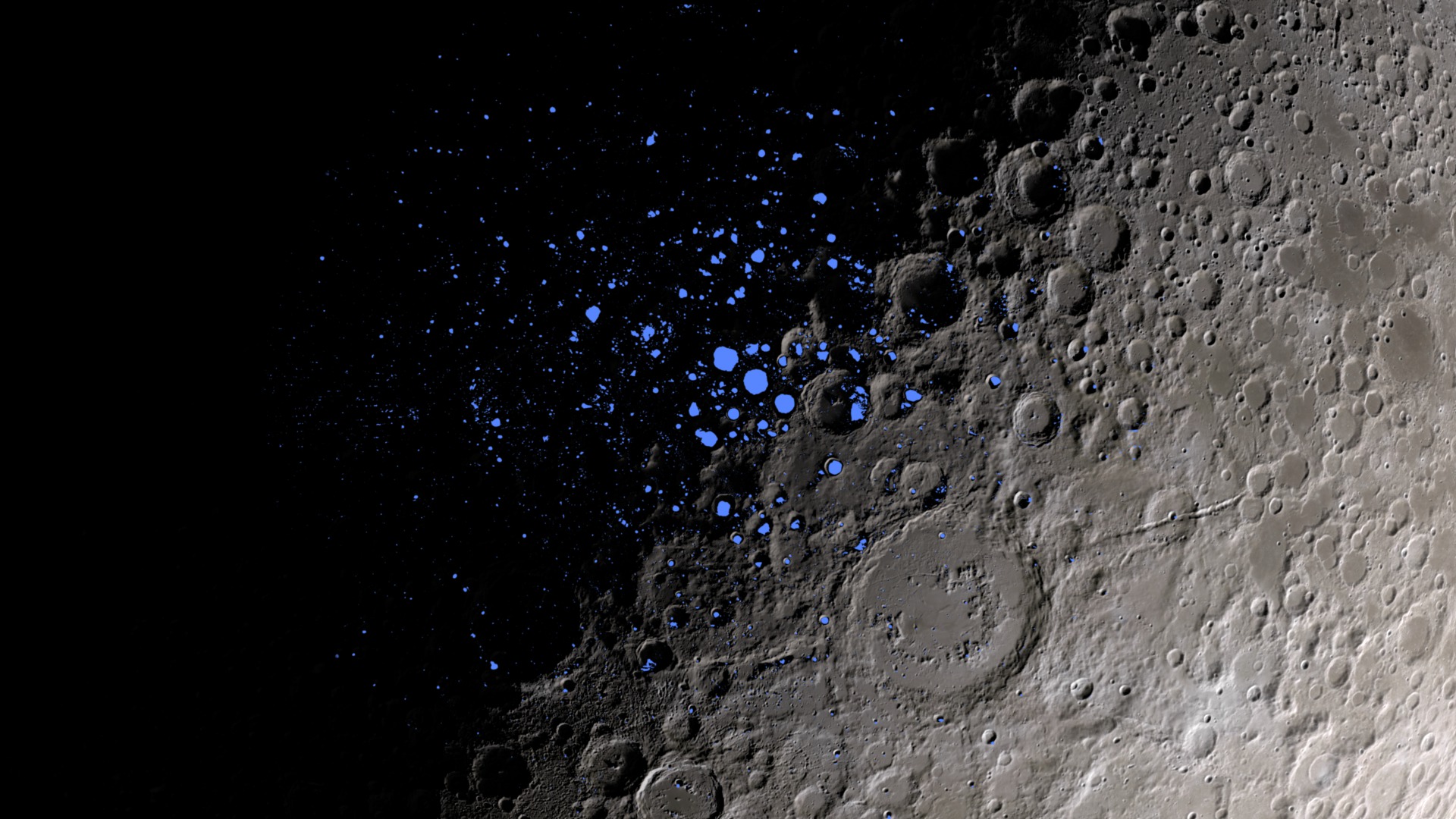Staring Into Darkness
The walls within some craters at the moon's poles have gone without sunlight for as long as two billion years. Known as permanently shadowed regions, these craters lie almost perpendicular to the sun, never receiving its warmth or light. By bouncing laser beams off the moon's surface, NASA's Lunar Reconnaissance Orbiter (LRO) mapped the shape and elevation of these incredibly dark areas. Detailed 3-D models constructed from the data, combined with data collected by other instruments aboard the spacecraft, reveal which craters are fully hidden from the sun's rays, and which crater floors are cold enough for chemicals such as water to build up in the lunar soil. Watch the video to learn more.

A NASA spacecraft explores the moon's permanent shadows.
What instruments does LRO use to probe the moon's darkest shadows? Watch this narrated video to find out.

Temperatures within permanently shadowed regions can get as low as -414 °F.

By creating contour maps of the moon's poles, scientists could figure out which craters have permanently shadowed regions.

Permanently shadowed regions (blue) cover about three percent of the moon's south pole.
Credits
Please give credit for this item to:
NASA's Goddard Space Flight Center
-
Animators
- Ernie Wright (USRA)
- Chris Smith (HTSI)
- Chris Meaney (HTSI)
-
Video editor
- Dan Gallagher (USRA)
-
Narrator
- Dan Gallagher (USRA)
-
Producers
- Dan Gallagher (USRA)
- Chris Smith (HTSI)
-
Scientist
- John Keller (NASA/GSFC)
-
Writer
- Alex Kasprak (USRA)
Release date
This page was originally published on Tuesday, April 2, 2013.
This page was last updated on Wednesday, May 3, 2023 at 1:52 PM EDT.


